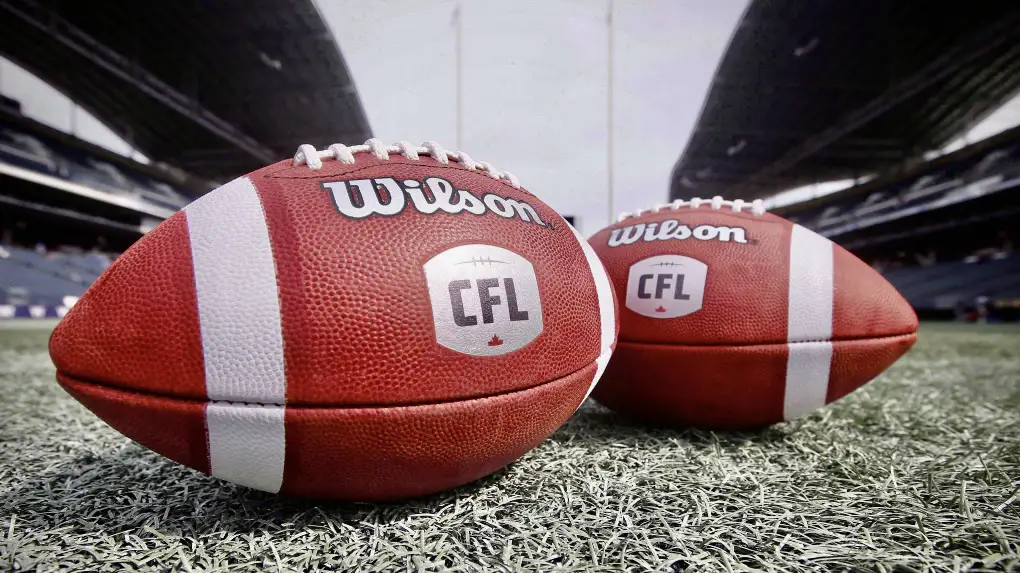
The CFL is hoping to make its way back to the field in 2021. It’s been a two-year journey of survival filled with harsh truths, uncertainty, confusion, and doubt.

In what seems like a lifetime ago. On November 24th, 2019, the Winnipeg Blue Bombers won the 107th Grey Cup, beating the Hamilton Tiger-Cats 33-12. In the coming months that followed, the entire world would change. A global pandemic would emerge and force everyone to hit pause, regroup and push forward to function within an uncertain world.
The pandemic has altered many lives, disrupted businesses, and society has been thrust into survival mode. Sports leagues included. And the CFL, of all the established sports leagues that have stood the test of time, has been hit the hardest and is the most vulnerable to not surviving.
The pandemic forced the CFL to cancel their entire 2020 season, and for the first time since 1919, the Grey Cup wasn’t awarded. Unable to salvage their season or crown a champion for the first time since the present-day version of the Canadian Football League was formed in 1958. The CFL’s championship game and their league went dark.
The pandemic also forced many to take a peek behind the curtain of the Canadian Football League, and they didn’t like what they saw. The evidence has always been there for anyone who cared to seek it out. The two-year delay in play has compelled the CFL to take a deep look inward at what they are and what they should be and has compelled some on the outside to focus on what has already been evident. The recent talks between the CFL and the XFL and its new ownership group about a potential alignment and collaboration have had many searching for answers with more questions arising about the CFL’s recent past, present, and future.

CFL Commissioner Randy Ambrosie revealed that in their last season of play in 2019, the league collectively lost around $20 million. Other reports suggest that three of the league’s nine teams (Montreal, Vancouver, and Toronto) lost money in 2019. All three franchises struggled in drawing local interest and suffered through waning returns at the gate.
A third of the CFL’s teams were struggling and operating at a loss—pre-pandemic, clear evidence of a league that is not a healthy one business-wise. In addition to all these losses, reports also indicate that the CFL lost between $60 and $80 million due to the cancelation of their 2020 season. Adding more salt to the league’s gashing financial wounds. Hence the reason that a 2021 CFL season needs to happen, for the league to merely stay alive.
The truth is that most people didn’t need to look very far to see the evidence of the CFL’s long history of financial troubles that extends back to the late ’80s. As chronicled by writers Ben Andrews and Craig Greenham in the fall of 2020. The CFL and its teams have always sought out financial assistance or bailouts to keep the operation afloat. But unlike 2020 and the present day, in the past, the CFL received them.
In the late ’80s, municipal, regional and provincial governments rushed to support the Canadian Football league through tax breaks, rent abatements, and loans. All were coming at the taxpayers’ expense. Nostalgia and national pride in what the CFL meant to its country helped keep the league alive during trying times.

Throughout the years, the very existence and continuation of the CFL have been challenged. And the league has called upon the NFL, the national and local Canadian government, and even entities like Tim Hortons to help bail the CFL out of financial jams. The NFL door has been knocked on several times over the years. In 1997, the National Football League answered and gave the CFL a loan, and they continued their pact/agreement/business arrangement up until 2006.
The bailouts and last-second saves are no more. And as a result, the CFL’s historically fractured business model has finally caught up to them. The business side of the league has been on a downward slope for over a decade. As the sports landscape continues to modernize and evolve, the CFL’s business model hasn’t.
The solutions to their financial woes have been quite telling and emblematic of their issues. From cutting player salaries to reductions in staffing to centralizing scouting. All signs of a league cutting corners and buying time until the next Hail Mary comes along. But Doug Flutie and that era of miracle plays have long since been retired. CFL Franchises like the Toronto Argonauts have struggled for years to find a way to thrive and make a significant profit despite making changes again and again and again.
The issues with the CFL go beyond the troubles they’ve had with their franchises. The lack of growth over the years is chief among their problems. The CFL, as it is presently constituted, is only a nine-team league. The Atlantic Schooners remain lost at sea. Part of the CFL’s most significant issues, since the inaugural season in 1958, which introduced their current style of play, is that they have failed to build upon its modest-sized league. Quite frankly, it’s why their business model is so limited. Fewer markets mean fewer viewers, less interest, fewer games, less gambling, etc., and the reason for the lack of growth is because the expenses in doing so don’t match the demand.
Most major sports leagues that have been around for several decades have expanded greatly since their inception. As the popularity of their leagues grew, so did the number of teams and markets. In defense of the CFL, their teams are based only in Canada, a much smaller country than the United States, and nothing compares to the big four, the NFL, MLB, NHL, and NBA, each have 30-32 teams. Major League Soccer, founded in 1996, has 27 teams, spread out over Canada and the United States. The CFL can only expand so much in Canada, and it’s part of the reason why the league has been attempting to reach out globally to expand its audience and earning potential.
There’s hope for the CFL in the form of legalized betting in Canada, and it’s something that the league should fully embrace and promote heavily. Barring an expansion into the United States and worldwide, the CFL needs a forward-thinking approach to create multiple revenue streams. Make your nine franchises as strong as possible. Fantasy, gambling, licensing, sponsorships, and other forms will need to drive revenue streams for the CFL to become a league that thrives rather than survives.

In a battle for its very existence, The CFL needs to get back on the field, and the teams need to open up their stores again. The only way that the league can survive is if they are allowed to have customers come back in. The CFL, based on how it is presently constructed, has only two viable ways to be profitable, and that’s through attendance and television. Other established leagues during the pandemic adjusted and went without fans in the stands; after all, they had large nest eggs to rely upon that a league like the CFL doesn’t.
The NHL, NBA, and other established leagues have found ways to survive and, in some cases, thrive because they have multiple revenue streams that can help shoulder the load despite the absence of consumers at their games. The CFL doesn’t, and that’s part of the problem. A problem that shouldn’t exist for a league that’s been in its present form of play since 1958. The kind of difficulty that is a lot easier to digest if the CFL was a startup or fledgling league in its early stages.
At the end of the day, it’s the die-hard fans and players who get the short end of the stick and suffer the most for the CFL’s struggles. The pandemic has magnified all of the CFL’s warts, and in some ways, it has also provided a scapegoat for everything that has ailed them. Hidden in the criticisms of CFL leadership is the simple fact that the popularity of the league in general in its own country is shaky at best. Some markets are strong; some are weak. And as a result, The league overall is not healthy as a whole.
The ultimate fear is that the short-sighted band-aid solutions, the lack of growth, and evolution and cost-cutting measures by the CFL and its owners are just delaying the inevitable demise of the league. Powerful ownership groups like MLSE, which owns the Toronto Argonauts, are unwilling to continue throwing good money over bad with no sight of progression in return. Winning can be a cure-all for survival but thriving as a business and having lasting power is a whole other story. It’s why many believe that Toronto’s leadership is one of the main drivers in working with another powerhouse in RedBird Capital Partners.

Because of the pandemic, A two-year wait is tolerable and understandable. Long-time and modern-day CFL fans are used to delays in play. Just not to the extent of which they are currently experiencing. Back on June 14th, 2018, Edmonton played a six-hour regular-season game in Winnipeg, a game delayed due to double lightning before the Bombers lost their home opener, 33-30, to EE. The weather delays totaling nearly 3 hours became the longest continuous game in Canadian Football League history. It was second only to the legendary Fog Bowl in length, which was held over two days. The hope is that the CFL can endure its current lengthy delay and get out of the multi-year fog that it’s been in.
There is still doubt that the CFL will make its way back and get to the field. The date for the league’s regular-season return has been pushed back to August 5th, and the number of games played has been shortened to 14 per team. One of many adjustments that the CFL has had to make, and there could be more on the way, depending on how Canada gets through the current phase of testing and vaccination rollouts.
With June being the next choke point in the CFL’s quest to return. The hope is that the backup plans to the backup plans never see the light of day. The players, fans, and the league are not out of the darkness yet, but there are glimmers of light in the distance. The best bet to get out of dark times is by opening your eyes and seeing what’s in front of you. Here’s hoping that the CFL returns to play with a new vision.

1 Comment
Leave a Reply
Cancel reply
Leave a Reply
Big Announcement: CFL Unveils Free Live Streaming Platforms
Get Alerts & Stay Connected
CFL iPhone AppCFL Android App












David Tress
May 4, 2021 at 12:53 pm
There was no reason to delay the 2021 CFL season. The regular season start date should be moved up to July 1st for a 16 game regular season schedule.